Post-event surveys are treasure troves of information for catastrophe modelers. They serve as the perfect natural laboratory to test the efficacy of modeling assumptions and open up avenues for improving the models. We surveyed areas around downtown Miami and the Florida Keys to understand the nature and intensity of wind and storm surge damage from Hurricane Irma. This post focuses on single- and multi-family, and manufactured homes; we’ll blog about commercial and industrial buildings later.
Catastrophic Structural Failure
When a building collapses following the loss of structural integrity, it usually does so for one of three reasons:
- Internal pressurization due to a breach of the building envelope, which in turn imposes loads that the structure was not designed to withstand (Figure 1)
- Lack of a continuous load path to transfer forces from the roof to the walls to the foundation (Figure 2)
- Failure of roof structures (trusses or rafters) and gable end walls
We observed a lot of damage due to inadequate wall connections or gable end collapse, and in many cases roof decking (or sheathing) was also lost (Figure 3). Often it was hard to identify the actual damage mechanism. It is extremely difficult, for example, to disassociate continuous load path failure from that caused by internal pressurization—but the consequences for vulnerability and loss are pretty similar.
We visited several manufactured home (colloquially mobile home) parks in the Florida Keys; most were extensively damaged, and many homes had their envelopes torn apart (Figure 4). In the majority of cases homes had not overturned, which suggests that their tie downs performed well and thus likely installed in accordance with improved spacing and installation requirements.
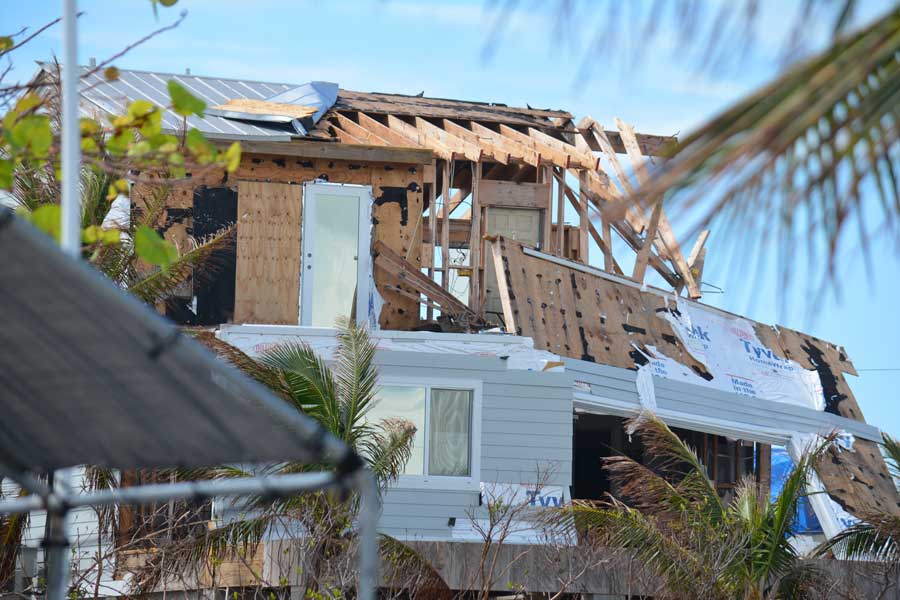
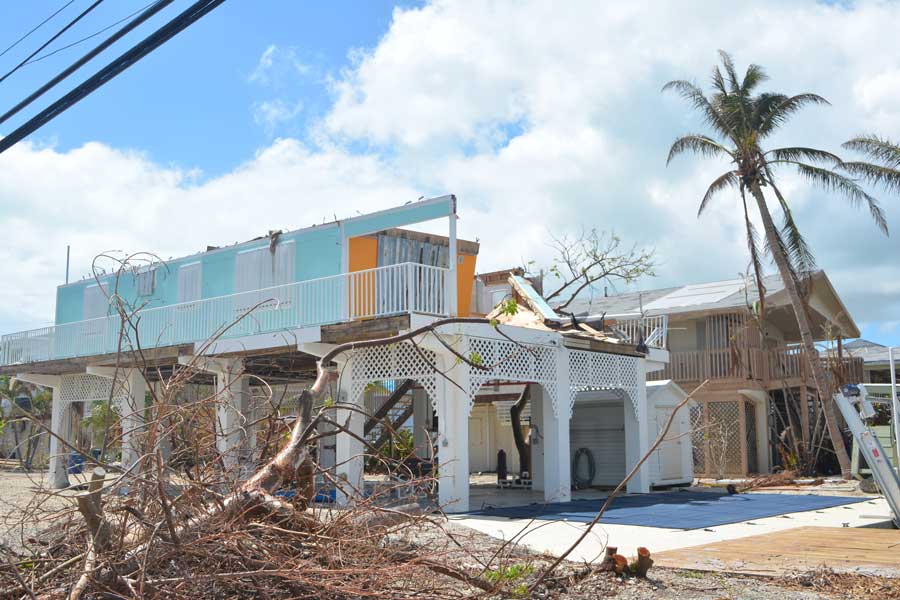
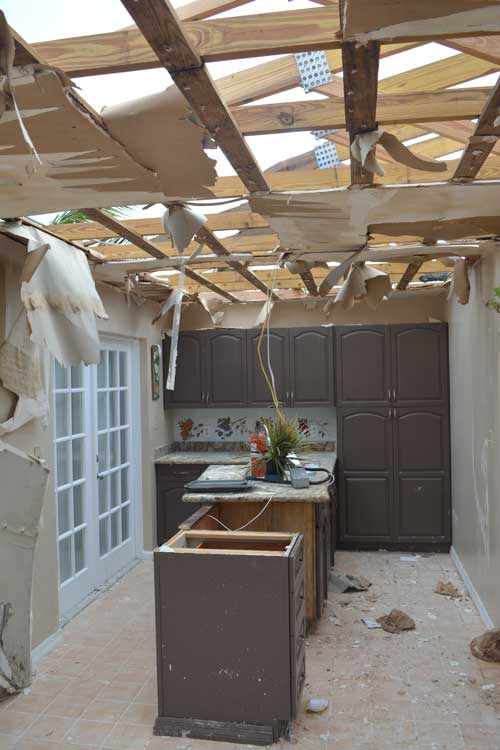
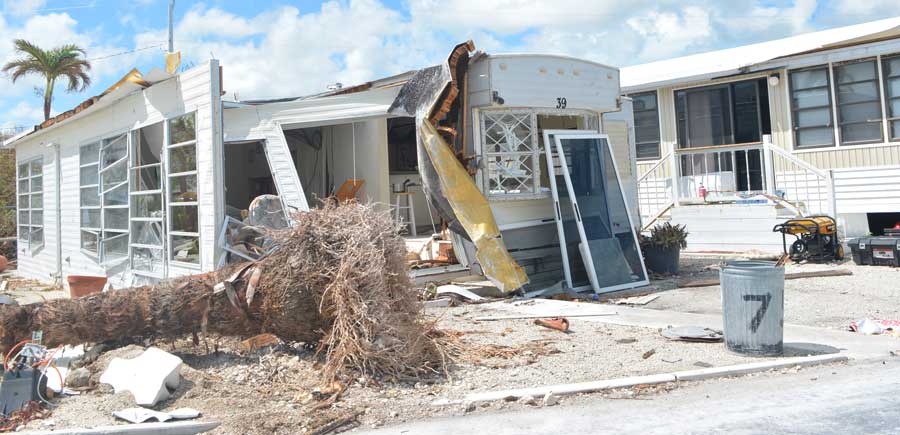
Building Components and Cladding
Significant damage can occur to the roof covers, soffits, doors (main and garage), and windows that clad a structure, all of which are vulnerable to localized pressures.
Opening Protection
The areas we visited fall under the windborne debris region prescribed in the Florida Building Code (FBC) version 2001 and beyond, which requires openings to be protected from potential debris sources to avoid catastrophic collapse from internal pressurization. Such protection was widespread around Miami, but variable in the Keys.
Protection was completely absent from homes designed in pre-FBC era, and some post-FBC homes had protection only on the beach-facing side of the envelope. In a few cases, damage was observed to shutters that were protecting windows.
Roof Covers
Most roofs surveyed were covered with asphalt shingles, clay tiles, or metal panels. Shingle and tile roofs suffered varying levels of damage and metal roof panels performed best. In neighborhoods with significant damage to shingle and tile roofs, metal panel roofs suffered little to no harm. Both mortar- and adhesive-set and mechanically attached clay tile roofs suffered similar levels of damage. For metal panel roofs the type of attachment (ring shank nails vs. screws) and gauge were the primary determinants of damage (Figure 5).
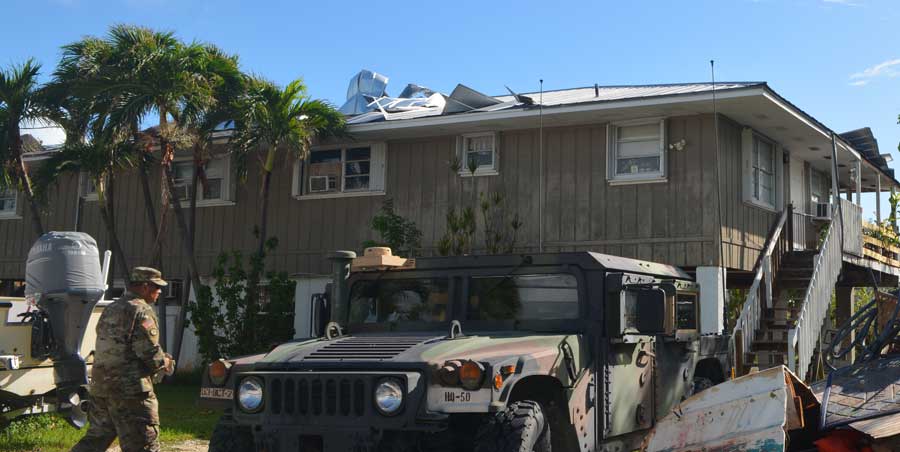
Soffits
Damage to soffits was particularly widespread in homes with metal panel roofs (Figure 6). Even where metal panels sustained little or no damage, soffits were blown out because of their inability to resist the wind-induced suction pressures, leading to interior damage from wind-driven rain.
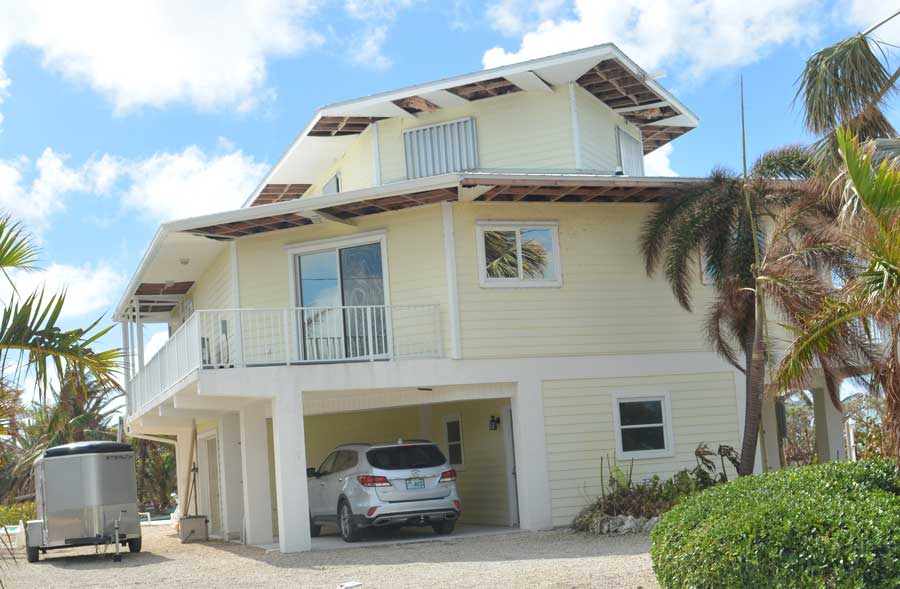
Garage Doors
In the Florida Keys we saw significant damage to garage doors due primarily to out-of-plane buckling caused by both inward (compressive) and outward (suction) pressures (Figure 7). In many cases, the doors simply rolled of their rails and came crashing down. The damage in the Keys was in contrast to what we saw in Miami-Dade County, which is in the high velocity hurricane zone; there we saw little damage to garage doors due to strict thickness requirements for debris impact resistance.
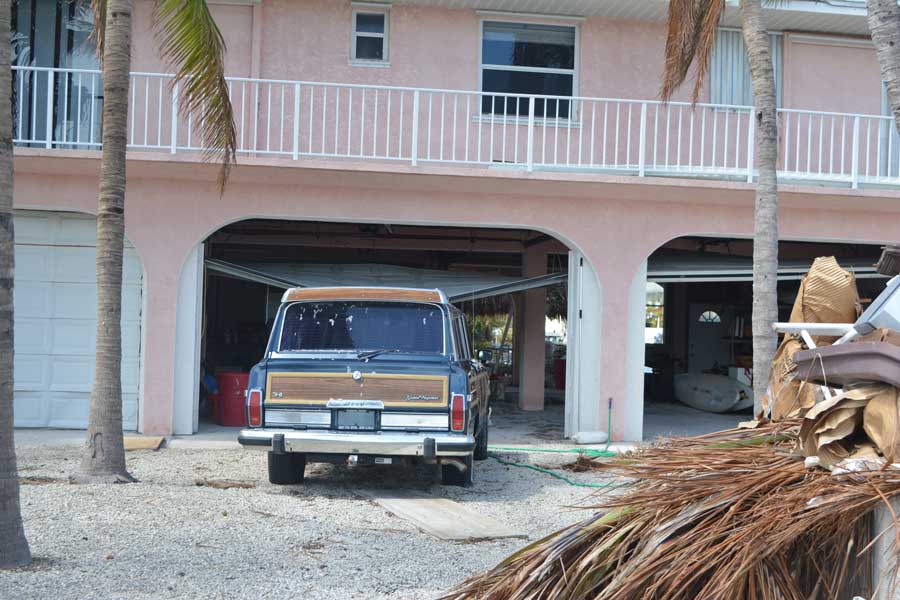
Storm Surge
Damage to single- and multi-family homes varied by the underlying foundation types. Homes on slabs sustained significant storm surge damage due to erosion of the underlying soil, causing the slab to lose its ability to transfer forces to the ground. Figure 8 shows an empty lot in Big Pine Key formerly occupied by a single-family home on a slab foundation that washed away. This failure mode stems from the lack of a continuous load path. In most cases of surge damage, significant loss of mechanical, electrical, and plumbing systems (or service equipment in general) was also seen, in addition to damage to contents. Buildings elevated on pile foundations often elevate their service equipment as well, and such homes fared well. However, this does not mean that buildings elevated on pile foundations cannot suffer damage. Lack of sufficient embedment of the piles, improper connections at the pile caps, or erosion of the soil around the piles can all lead to significant damage as illustrated in Figure 9.
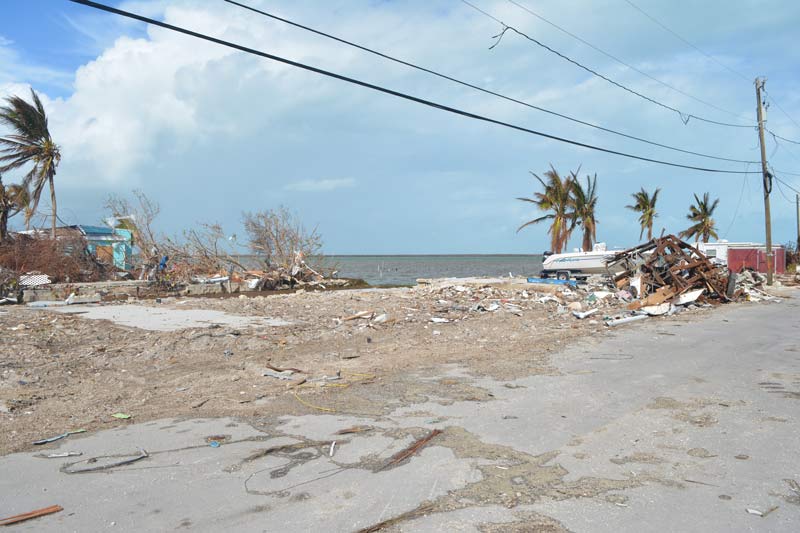
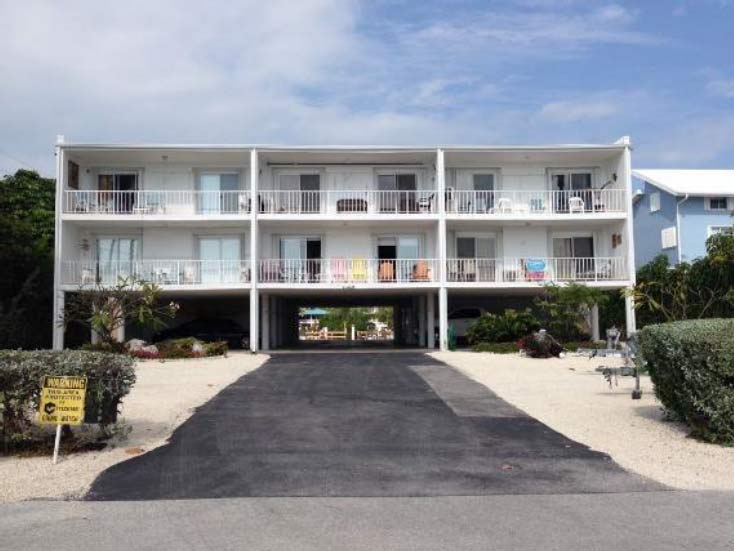
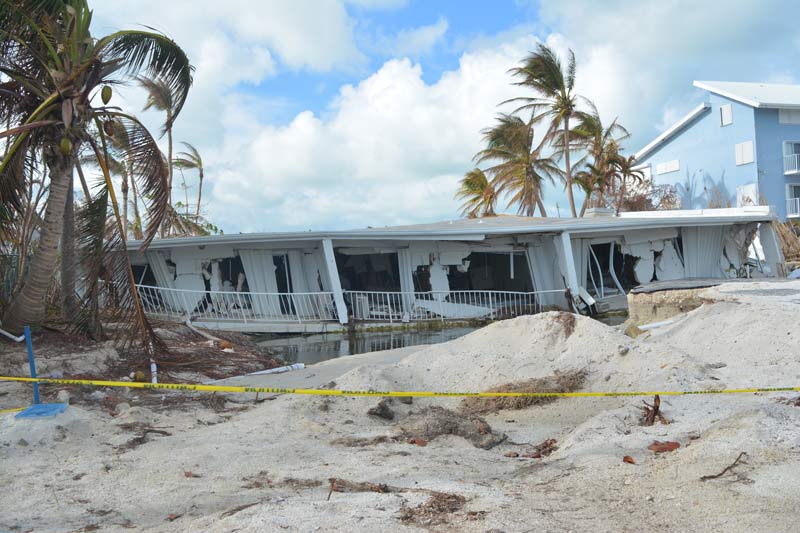
Did the Observed Damage Align with the Requirements of the Florida Building Code?
In general, newer structures built according to the FBC performed better than their older counterparts, but we found many cases where opening protection was provided only on the ocean-facing side of buildings—not the entire envelope. Opening protection in Monroe County seems to lag behind adjacent Miami-Dade County, which benefits from its characterization as a high-velocity hurricane zone. We noted that unreinforced masonry construction continues in Monroe County, even though it is discouraged by the FBC. Despite the significant changes to wind load provisions in the post-2004 Hurricane Charley building codes, pool enclosures suffered significant damage in the areas surveyed and was usually accompanied by damage to the structures to which they were attached.



